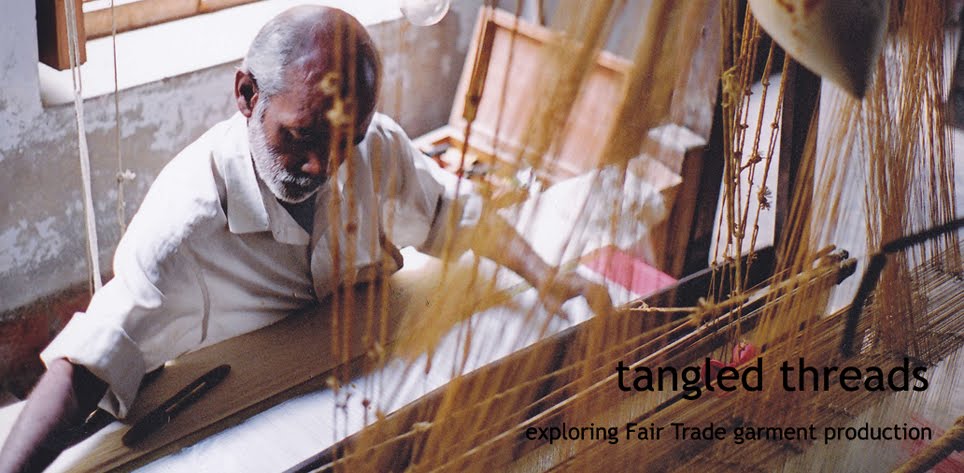.jpg)
.jpg)

17th July
We agreed to meet at 8.30 for breakfast. Either some of us do not know how to set their alarm, or the rice wine hit others worse than some. So after our slow start we start our journey to Banderban – sadly we had to leave Silas (the wonderful representative of Folk Bangladesh) in Chittagong to head back to Dhaka and get the People Tree delivery on track. As we headed out of Chittagong, we started up into the hills, I had been hoping for a little respite from the heat – but no. The forest that covers every scrap of land is covered in tropical looking species including banana palms and colourful birds. We have to stop a few times to hand out photocopies of mine and Miki’s passports and fill out our names in triplicate. But the check point army fellows all seem very jovial so it is not as scary as I thought it would be.
We finally arrive at the hotel. It appears to be carved into the hillside. The staff are so friendly – and they quickly carry our bags to our rooms. We have our own little huts, with mosquito net covered porches and the most amazing view you have ever seen from a toilet! We even have cute little gecko visitors that don’t even make really creepy noises in the middle of the night…
After lunch we head towards the village of the Tripura weaving group. Biplob (our other lovely Folk guide) assures us it is just a 1k walk down the road. Yes, 1k up, 1k down, all in 100% humidity – I look like a shiny drowned rat, I actually have a different coloured t-shirt on then when I first started!
Finally, after a deaf defying slope that flipflops just simply are not made for, we arrive at the village. The people here do not look Bangladeshi at all, especially the women who seem to have adopted the tribal look more than the others, flesh tunnels in their ears and thousands of beads around their necks.
This group of 12 women weavers only works for Folk Bangladesh, so when they don’t have work from them they rely on their husbands incomes who are predominantly day-labourers. They weave traditional cloth on back-strap looms. For this they need amazingly stretchy hamstrings as they sit with their feet straight out in front, the loom is tied to a post and then strapped around their bodies for support.
When working for Folk, they are able to earn about 200 taka per day, their biggest expense is food with about half of their income going on this. There is a school in the village set up by the Catholic church, most of the children attend, although some of the women don’t seem particularly bothered if their children do or don’t go.
We are ushered into what appears to be their town hall, all the buildings are on stilts so it’s a little climb. On the table they have a spread of food, they give us the BEST pineapple I have ever tasted. They then give Miki and Me a cloth each, Miki’s is narrow and long scarf – called a risha, mine is wide – the size of a sarong and is called a rinai. I ask what it is for, and am told it is the traditional skirt (duh! They are all wearing them) it is in the most beautiful intense turquoise blue. I am manhandled to stand and the women start tucking it into place, for a slightly horrifying second I thought they were going to pull my trousers off. They seem pleased with the result and I am touched. I bow toward them, and one of the tribal women takes off one of her beads and places it around my neck, deep breaths.
As we are leaving (and I am seriously dredding the ascent, the local kids challenge Miki to some football, Spain is the reigning champion after all…
The climb is made slightly easier by the setting sun and faint breeze, but I still have one of the most amazing showers back at the hotel, with some Amy Winehouse in the little porch we have a snifter of the local ‘brandy’ (again with their misleading, loose terminology)

No comments:
Post a Comment